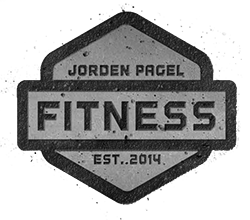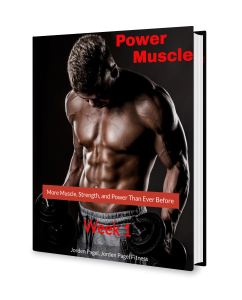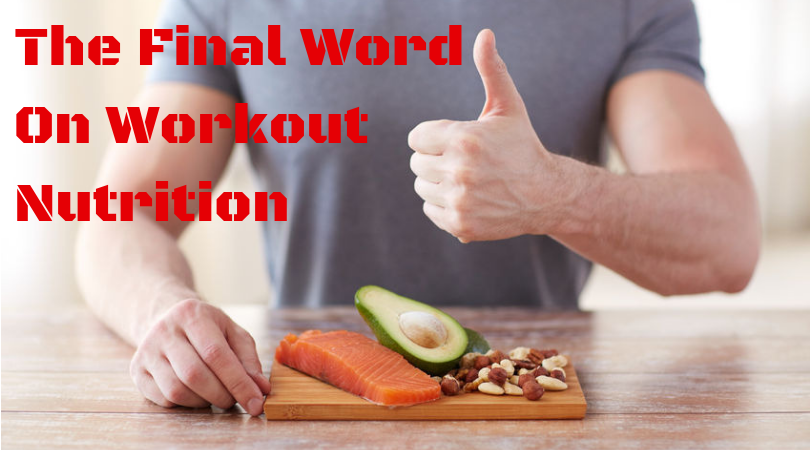How to Eat to Build Lean Muscle
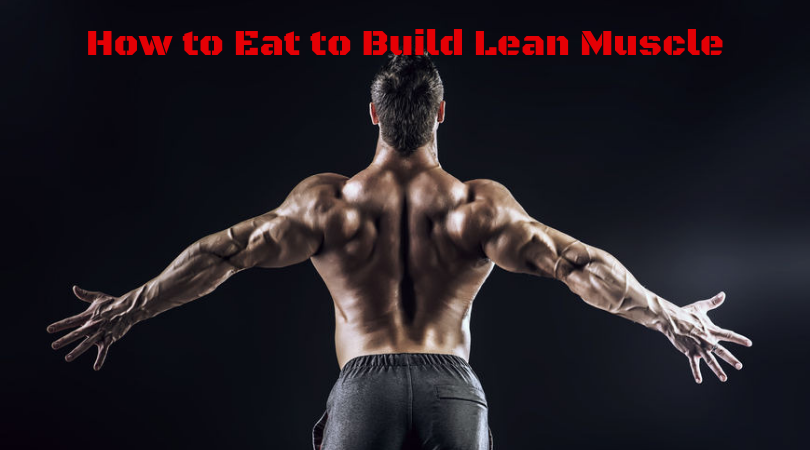
One of the most popular questions I get on Instagram and from my readers is “How much do I need to eat to build lean muscle?”
On the surface, it seems like muscle building nutrition is a mystery as old as time. And judging by the number of people confused by exactly what and how much they need to eat to build lean muscle, it very well may be.
However, speaking from experience, eating for muscle #gainz can be a rather complex and confusing topic if you’ve never been through the entire process before. As a coach, I understood it. But until I seriously underwent the process and invested in it, myself, I didn’t even completely comprehend it.
Don’t get me wrong. I’m not saying that knowing how to eat to build lean muscle requires an advanced degree. But if your goal is to add size, there’s a good way to go about your nutrition, and a bad way – especially if your goal is to add as much size as possible while minimizing body fat gain.
So that’s what I’m going to show you in today’s article: everything that goes into setting up your diet to help you build lean muscle, and craft a lean, Rhino-Jacked physique.

Build Lean Muscle: What to Know Before You Start
The first question you should ask isn’t how many calories you need in order to build lean muscle, but rather should you even start bulking in the first place. The biggest mistake people make is they start bulking before their bodies are in a good position to best utilize the extra calories and add lean muscle.
AKA they have too much body fat.
Now this may not be what you want to hear, but I’m here to tell you what you need to hear, not coddle you. If you’re looking to build lean muscle in the best way possible, your body fat should be absolutely no higher than 15% if you’re a man, and 20% if you’re a woman.  However, closer to 12% and 17%, respectively, is a much better starting point. And there are a few reasons for this:
However, closer to 12% and 17%, respectively, is a much better starting point. And there are a few reasons for this:
Insulin Sensitivity – The higher your body fat percentage, the less sensitive you are to the effects of insulin. This means you’re more likely to store extra calories in fat cells, rather than use it in muscle cells. The leaner you are, the more sensitive your body is to insulin, and thus, the more efficiently you’ll build muscle.
Fat Hyperplasia – When you overeat, your body increases the number of fat cells it has to help store the extra energy it doesn’t need to use right away. Now the problem is you can reduce the size of these fat cells, but you can never eliminate them. And the more fat cells your body has, the easier it is to store fat, and the tougher to lose it later on.
So, now that we’ve established where you need to be in order to start building muscle, let’s talk about how to put a nutrition plan together that’s going to get you there.
How to Eat to Build Lean Muscle
So you’ve decided you’re in a good spot to build lean muscle. (And if you’re not, fill out an application here for a spot in my Chubby to Chiseled coaching program, and we’ll get you there in no time).
Now we need to lay out your nutrition plan step by step to ensure you’re adding as much muscle as possible, without adding much fat in the process.
As an aside, people constantly ask “How can I build lean muscle without adding any fat?”
The truth is, you can’t. Not unless you want to spend the next two years only adding a couple pounds of muscle. If you want to add any amount of appreciable size, naturally, you have to accept that you’re going to get a bit soft and fluffy. Embrace it. It’s nothing that a month or two of dieting won’t take care of later on.
Now, the first thing we need to do is set your calorie intake…
Calories
If you’re not gaining weight, you’re not eating enough calories. Period. Just like you can’t lose fat if you’re not in a calorie deficit, you can’t build lean muscle if you’re not in a calorie surplus.
(As an aside, I find it hilarious there’s this huge debate about whether or not calories matter for fat loss, but zero debate about whether or not they matter for muscle gain).
The first thing we’re going to do is find your individual calorie maintenance – or the number of calories you need to eat every day to maintain your current bodyweight.
Understand that there are no perfect calorie calculators out there. At best they give you a starting point. The real magic (and progress) comes from tracking your intake consistently and adjusting accordingly.
To find maintenance, we’re going to take bodyweight and multiply it by 15. We’ll use me as an example:
215 pounds x 15 = 3,225
So to maintain my weight, I need to eat around 3,200 calories per day.
How many calories to build lean muscle
The next step is figuring out what our muscling building calorie number is. To do this, we’re going to take our maintenance and add 10-20%
If you’re someone who’s less active during the day (desk job), is prone to adding body fat fairly easily, or between 13-15% if your a man or 18-20% if you’re a woman, stay closer to a 10% surplus.
If you’re extremely active during the day, less than 10% as a man or 15% as a woman, or are skinny/find it hard to gain weight, use a 20% surplus.
And if you fall somewhere in the middle of all that, use 15%
For me, we’re going to use 10% because I tend to get fluffy fairly easy.
3,225 calories x 1.10 = ~ 3,550 calories
So now we have our bulking calories figured out. But we’re not going to eat those every single day. As we’ll discuss below, we’re going to cycle our calories on training and rest days. First, though, we need to figure out protein intake.
Protein
Protein is pretty simple. While there are a ton of varying recommendations for how much protein we need, the general consensus is somewhere between 0.82 – 1 gram per pound of body weight is best.
So for ease, I’ll use 1g/lb. So that would be 215 grams per day. In calories this would be:
215g x 4 calories per g = 860 calories from protein
Since protein is directly involved in muscle protein synthesis (MPS), common sense says that the more protein you eat, the more muscle you’ll build.
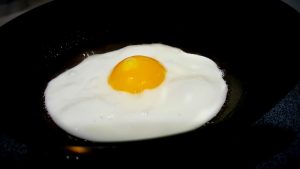 But this isn’t true. According to a 2011 study by Phillips and Van Loon, they found .82g/lb. of bodyweight to be the upper limit of protein synthesis. In other words, eating more protein won’t increase how much muscle you’ll build.
But this isn’t true. According to a 2011 study by Phillips and Van Loon, they found .82g/lb. of bodyweight to be the upper limit of protein synthesis. In other words, eating more protein won’t increase how much muscle you’ll build.
I prefer using 1g/lb because it’s a nice round number, and over-consuming protein by a little is never a bad thing.
The caveat to this is if you’re using some type of AAS, or Anabolic-Androgenic Steroid. Steroids increase the rate of MPS and nitrogen utilization in the body, meaning that more amino acids are needed to prevent the breakdown of muscle tissue. If you’re using gear, you’ll want your protein intake probably closer to 1.2g/lb.
Carbs, Fat, and Calorie Cycling
When it comes to building muscle, I love using a calorie/carb cycling approach. This is going to do a few things:
Help increase insulin sensitivity – Believe it or not, insulin is one of the most anabolic hormones in the body. Meaning without it, we’re not going to build lean muscle, as effectively, if at all. Being highly sensitive to the effects of insulin means the body is going to be much more efficient at nutrient partitioning: carbs will be used to fuel exercise and recovery, protein will be used to repair muscle tissue, and fat will be used to facilitate proper hormone function and other physiological processes, with minimal fat storage. All of which means that you’re going to build lean muscle more efficiently, with minimal fat gain.
And what affects our sensitivity to insulin? Protein to a certain extent, but mostly carbohydrate intake. Carbs spike the release of insulin. A constant stream of insulin in the body blunts it’s effects. So when we’re consistently eating a lot of carbs, all the time, our body is constantly releasing insulin as a response. By cycling our carb intake day-to-day (as well as timing them around our workouts, which we’ll discuss below) we help maximize our insulin sensitivity and thus build lean muscle more effectively.
Help Increase Metabolic Flexibility – Our bodies prefer to run on both carbs AND fat for energy. Both help fuel different types of activity. Carbs are the preferred fuel source of the glycolytic, or anaerobic energy system, which is what we use to fuel high-intensity, short burst activity like sprints, jumps, lifts, etc.
Fat, on the other hand, is the fuel source preferred by the oxidative, or aerobic energy system. This is what we use for long duration, or low-intensity activity, like jogging, biking, walking, etc.
Constantly bombarding your body with high amounts of carbs affects your ability to effectively switch between these two systems, and the body’s ability to access stored body fat.
Food Variety – Something I’ve found very important for overall client adherence to a plan is variety. And by cycling carbs and fat intake day-to-day, you have the ability to eat a wider variety of food, thus keeping things interesting.
For me, I love being able to eat high amounts of sourdough, pasta, rice, potatoes, pancakes, etc one day, and then the next day I can have bacon, eggs, T-bones, and other high-fat foods.
Training Days
Okay, so the first thing we’re going to do is find our carb and fat intake for days we train with heavy weights.
A good general rule of thumb when it comes to bulking is to set carbohydrate intake somewhere between 2-2.5 grams per pound of body weight.
Why so high? Because remember, carbs are our body’s preferred source of fuel for high-intensity activity. By giving your body the right fuel for lifting weights, you’re going to be able to train harder, with more intensity, lift heavier weights, and recover better – all of which are going to help increase MPS and build more muscle.
the right fuel for lifting weights, you’re going to be able to train harder, with more intensity, lift heavier weights, and recover better – all of which are going to help increase MPS and build more muscle.
Where should you set your carb intake at? Depends. Partially on personal preference and how many carbs you want to eat. But more so, depending on your body fat percentage. Remember, the higher your body fat percentage, the more resistant you are to insulin, and the less efficiently your body can utilize carbs. For that reason, the closer you are to 15%/20% body fat range for men and women, the lower on the scale you want your carb intake to be.
For me, I’m going to start my intake at 2g/lb.
215 pounds x 2g = 430 grams of carb per day
In calories that equates to:
430g x 4 calories per gram = 1,720 from carbs
The last thing we need to do then is find our fat intake for training days. To do that, we’re going to add together our calories from protein and carbs and subtract that from our total calorie intake.
860cal/protein + 1,720cal/carbs = 2,580 calories from protein and carbs
3,550 – 2,580 = 970 calories remaining
Then we need to divide that number by 9, for how many calories are per gram of fat:
970 cal / 9 = ~ 108 grams of fat per day
So, putting that our together, here’s what my Training Day nutrition would look like:
Calories – 3,550
Protein – 215g
Carbs – 430g
Fat – 108g
Rest Days
To find rest day carbs and fat, we’re going to follow the exact same protocol. The only difference is we’re going to be eating at maintenance on our rest days, with a lower overall carb intake, due to lower energy expenditure.
On rest days, carb intake is going to be set to 1g/lb.
215 pounds x 1 g = 215 grams of carbs per day
215 x 4 = 860 calories per day from carbs
Next, we’ll follow the same procedure as above to find fat intake:
860cal/protein + 860cal/carbs = 1,720 calories from protein and carbs
3,225 – 1,720 = 1,505 calories remaining.
The last thing we need to do is divide that number by 9.
1,505 cal / 9 = ~ 167 grams of fat per day
So, putting that our together, here’s what my Rest Day nutrition would look like:
Calories – 3,225
Protein – 215g
Carbs – 215g
Fat – 167g
So looking at everything, here’s what my nutrition would look like over the course of a week, depending on the number of training days in my cycle:
Training Days (4-6 days/week)
Calories – 3,550
Protein – 215g
Carbs – 430g
Fat – 108g
Rest Days (1-3 days/week)
Calories – 3,225
Protein – 215g
Carbs – 215g
Fat – 167g
Other Considerations to Successfully Build Lean Muscle
Progress
Like I mentioned above, don’t expect that these macros are your one-way ticket aboard the gains train. They’re a starting point. Real progress is going to come from monitoring and adjusting based on what you’re seeing happen with your body.
Using an app like MyFitnessPal, track your macronutrient intake every single day, aiming to come within +/- 5g of each macro every day.
 Generally when bulking, in order to add as much muscle as possible without fat, naturally, you want to see a bodyweight increase between 0.5-1 pound per week. How fast or slow you gain muscle is going to be highly individualized to you, but this is a good general starting point.
Generally when bulking, in order to add as much muscle as possible without fat, naturally, you want to see a bodyweight increase between 0.5-1 pound per week. How fast or slow you gain muscle is going to be highly individualized to you, but this is a good general starting point.
Track your weight every morning, and at the end of the week, find your weekly average. Then compare that average week over week. If after a month, you haven’t seen a weight increase somewhere between 2-4 pounds, increase your training day calories by 2-300 calories from carbs.
If your weight is increasing within that range, stay the course.
Other things to consider when monitoring progress are waist measurements. When it comes to adding body fat, the waist is typically where it’s going to show up first. So, after a month if your waist measurements haven’t increased more than half an inch total, you’re probably safe to add in more calories as well.
If you find your weight and/or waist are moving up too fast, pull back 2-300 calories from REST DAYS.
Lastly, are progress pics. Take these once per month and compare month over month. This is going to help you see changes that aren’t noticeable day-to-day in the mirror.
Fasting
Since Intermittent Fasting is so popular again, the question I get a lot from people looking to build lean muscle is “Should I fast?”
When it comes to adding size, you’re going to be taking in a lot more food than you normally would. So fasting regularly doesn’t make sense. But that doesn’t mean I don’t think you shouldn’t fast.
While fasting can have a lot of benefits such as boosting insulin sensitivity and resetting hunger signals, probably the biggest benefit that fasting has, in my experience and opinion, is normalizing gut health.
“All disease begins in the gut.” – Hippocrates
Gut health is a big deal, and something scientists are just starting to understand, but what they know is it improves everything from immune system function to brain health. Gut issues can lead to problems including allergies and arthritis. Poor gut health also affects nutrient absorption – which can affect how effectively we lose fat and build muscle.
Here’s where fasting comes into play: By giving your gut a break from taking in and breaking down food around the clock, it has time to reset itself and improve the microbiota in your gut. The reality is, we as humans are not built to be constantly eating.
“Only recently have humans and domesticated animals had constant access to food. During their evolution, many animals and humans ate only intermittently. In rodents, both fasting for 24 hours every other day or twice weekly extends lifespan up to 30%, independent of both total food intake and weight loss. [Intermittent fasting] can also protect against obesity, cardiovascular disease, hypertension, diabetes, neurodegeneration, and the clinical progression of several neurodegenerative diseases.” — Fontana & Partridge, 2015
Our bodies probably are not designed to constantly bombarded by food. And especially when you’re bulking and taking in a large amount of food, consistently, this can potentially lead to a lot of digestive issues.
Which is why during bulk phases I like to institute a 24-hour fast, once every week or two; to help give my digestive system relief, regenerate good gut bacteria, and just take a break from eating.
And no. One 24-hour fast every week or so is not going to kill your gains. Do it on a rest day. Stop eating at dinner, and fast until dinner the following evening. Then break your fast with a larger, more calorie-dense meal.
Or, you may not even need to do this. It’s not for everyone, nor is everyone going to need it. Intermittent fasting is just a tool I like to use, that could be right for you, as part of a customized plan.
Workout Nutrition
Not going to go super in-depth here as I wrote an entire article on the subject.
Peri-workout nutrition is very important because if you’re not properly fueling your muscles for performance and recovery, your efforts to build lean muscle are going to be impaired.
Contrary to what most people believe, pre and intra-workout nutrition are probably more important than post-workout nutrition. Yes, you should each within a few hours of your workout, but if your pre and intra-workout nutrition are on point, post-workout nutrition becomes much less important.
Read this article on Workout Nutrition to learn more.
Sleep
This is likely the most neglected factor by most people in the muscle building process, which is just plain dumb. Out of  nutrition, training, and sleep, sleep is the one thing we already know how to do. Most just don’t know how to do it better, or prioritize it.
nutrition, training, and sleep, sleep is the one thing we already know how to do. Most just don’t know how to do it better, or prioritize it.
If you’re not getting enough sleep, you’re going to find it extremely difficult to build lean muscle. End of story.
Training is what damages our muscles and breaks them down. Sleep is what allows our muscles to recover from training and grow bigger. Sleep is regenerative; meaning that during a good night’s sleep, our body shuts down most other physiological processes and puts all it’s resources into the recovery and repair of tissues, biological systems, secreting key hormones like testosterone, and reducing systemic stress and cortisol levels.
Why is this important? Elevated stress means elevated cortisol. Too much cortisol, too often, is not a good thing. Cortisol is catabolic, which means it promotes the breakdown of tissues. When too much cortisol is present, your body can’t repair muscle tissue, testosterone release is suppressed…basically, the perfect environment to NOT build lean muscle.
Not only does a lack of sleep impair muscle repair, but it’s going to impair your performance as well; which means you’re not going to be able to train as hard, lift heavier weights…all the things needed to induce new muscle damage for more growth.
Lastly, sleep has a big impact on insulin sensitivity. The less sleep we get, the more resistant we become to insulin, which as we talked about above, is not a good thing.
In short, if you want to build lean muscle, sleep needs to be a priority. No exceptions.
To learn more about sleep, and how to improve it, check out this article.
Supplementation
When it comes to building muscle, there are definitely a few helpful supplements you want to have in your arsenal.
Greens Powder
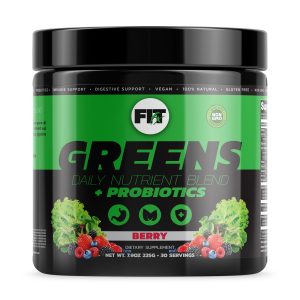 I’m not condoning anyone not eat their veggies. But the reality is, when you’re eating to build lean muscle, veggies are probably going to be low on the priority list. That doesn’t mean you shouldn’t eat them They provide a ton of benefits for gut health, as well as vitamins and minerals responsible for helping our bodies function properly. But they’re also very filling and don’t provide a ton of calories.
I’m not condoning anyone not eat their veggies. But the reality is, when you’re eating to build lean muscle, veggies are probably going to be low on the priority list. That doesn’t mean you shouldn’t eat them They provide a ton of benefits for gut health, as well as vitamins and minerals responsible for helping our bodies function properly. But they’re also very filling and don’t provide a ton of calories.
Which is why I like to supplement with a high-quality greens powder like this one from FitFX Labs.
The FitFX Greens + Probiotic is not only the best tasting greens powder I’ve ever had, it also has done a lot to help normalize my gut health. I’m not someone who enjoys eating veggies, ever, and when I started taking FitFX Greens, I saw a noticeable improvement in my digestion.
Protein Powder
I like protein powder for convenience. While most days I prefer to get all my protein from actual food, sometimes having a shake makes things simpler, while being easier on digestion.
My favorites are FitFX (chocolate, vanilla, and chocolate peanut butter) and Onnit Grass Fed Whey.
Highly Branched Cyclic Dextrin + EAAs
If you read the article on workout nutrition I linked above, then you saw me recommend this.
And if you didn’t read it, go fucking do it. I said it’s important. This article isn’t going anywhere.
Cyclic Dextrin + EAAs are my go-to intra-workout because as far as a carb source goes, cyclic dextrin is available for almost immediate uptake to the muscles cells, with no digestion involved – which is what you want during a workout. The EAAs, while maybe not necessary, provide a bit of cheap insurance, while being better than BCAAs, and without the downsides.
Omega-3 Fish Oil & Curcumin
Not only does fish oil provide a ton of health benefits, but one thing I like it for specifically is to help reduce inflammation. Same with curcumin.
Inflammation tends to be painted as this negative thing. And while it’s not (you want inflammation to occur during training) chronic inflammation is. It can impair recovery and muscle growth, as well as impact training performance. Fish oil and curcumin both help fight chronic inflammation levels.
Grab fish oil and curcumin here
Ashwagandha
Ashwagandha is a staple in my stack nowadays. Studies have shown ashwagandha to have benefits for treating high blood sugar, high stress and elevated cortisol levels, depression, and low testosterone and infertility, to name a few
Not only that but it may help increase muscle mass, strength, and improve body composition.
Ashwagandha is one of those good insurance supplements because it’s cheap and has been shown to have a lot of positive health benefits.
Creatine
This should be a no-brainer as for years now, studies have shown the effectiveness of creatine on strength and training performance. It’s cheap, it’s proven for helping improve high-intensity activity, and it has a number of benefits for cognitive function as well.
Build Lean Muscle the Right Way
Eating to build lean muscle is probably the area people struggle with most when it comes to adding slabs of grade-A rhino meat. And looking at the depth of this article, you can probably understand why.
Much like losing fat, or becoming stronger, the muscle building process needs to be a priority. And eating to build lean muscle may be the most important part of that. Because while yes, you need to train hard, employ progressive overload, and be consistent in the gym, if you’re not eating enough, you’re going to find yourself spinning your weeks day after day, week after week, month after month, going to the gym and seeing no results.
Eating to build lean muscle can be fun, but like any other serious physique goal, it needs to be taken seriously, and more importantly, executed consistently. And now you have a plan of attack to do just that.
Want a sleeve-stretching, plateau-busting training plan to pair with your new muscle-building diet? Grab your free copy of the Power Muscle training plan here.
